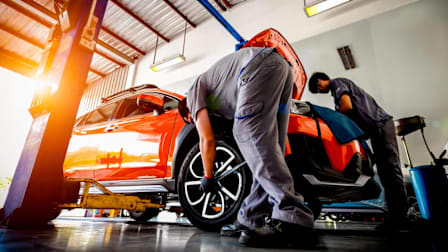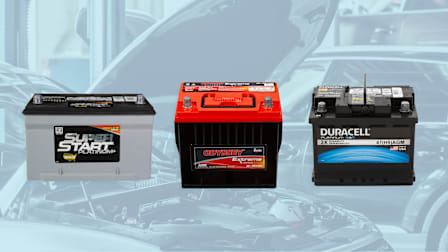How to Clean Your Car's Interior
Expert tips to freshen your vehicle’s cabin and help retain your car’s resale value

With new and used-car prices as high as they are, it’s more important than ever to protect the vehicle you already have. You don’t have to spend $100 or more to bring your car to a detailer or car wash, either. As we’ll share below, it’s easy to deep-clean your car on your own, from your own garage or driveway.
- Cleaning Your Car's: Carpet and Seats Leather and Vinyl Windshield Touchscreens
- Car Cleaning Tips to Protect Your Health
Carpet and Seats
What you’ll find: Crumbs, spills, and dirt can start to smell if not regularly cleaned.
What to do: Vacuum the carpet and cloth upholstery using the right attachment for the job. An upholstery tool’s short bristles can agitate dirt out of cloth; a crevice tool can reach under and in between seats and into corners. A steam cleaner lifts stains from carpet and upholstery, but soap and water on a soft microfiber cloth works, too. Leave the windows open for a day or longer, if possible, to allow moisture to dry thoroughly.
What not to do: Don’t soak seats; damp cushions can foster mold and create a musty smell.
Leather and Vinyl
What you’ll find: Leather and vinyl are treated with a protective coating that requires gentle cleaning.
What to do: Clean them with a soft cloth and a small amount of dish soap and water (if you can find saddle soap, that works best). Follow with an automotive-specific leather conditioner to keep the upholstery from drying out.
What not to do: Never use products containing bleach or hydrogen peroxide. And avoid commercial detailing sprays that leave the dashboard surface looking wet or glossy, because that can create glare on the windshield. Simple water and a mild, automotive-specific cleaner are best.
Hard Surfaces
What you’ll find: Like the carpet and seats, hard surfaces in your car can become dirty from crumbs, spills, and fingerprints, and outside air pollution can leave residues.
What to do: Dampen a small, clean paintbrush or soft toothbrush to clean vents, seams, and cup holders. Then apply alcohol to a microfiber cloth to gently clean other hard surfaces.
What not to do: Don’t use paper towels, which can leave a trail of lint behind.
Windshield
What you’ll find: The inside of the windshield and windows can become dirty from outside air pollution as well as from interior vapors that could leave residue and impede visibility.
What to do: Clean with a soft cloth (preferably chamois) and an automotive glass cleaner containing alcohol. Use two cloths to avoid streaks: Apply the product with one, and wipe the glass clean with the other.
What not to do: To avoid getting cleaner on your upholstery, always remember to spray the cloth and not the glass. Resist the temptation to use a traditional window cleaner, as it may not remove the film that collects inside a windshield and can cause distracting smears.
Touchscreens
What you’ll find: Infotainment screens have become more prominent, and so are the dust and fingerprints that they collect. But touchscreens require different cleaning products than you’d use for glass.
What to do: Dampen a microfiber cloth with isopropyl alcohol, then gently rub the screen clean.
What not to do: Never use an ammonia-based glass or window cleaner, which might damage a screen’s anti-glare and anti-fingerprint coatings.
Car-Cleaning Tips to Protect Your Health
Washing your hands and cleaning and disinfecting high-touch surfaces are two important ways to stop the spread of bacteria and viruses, according to the Centers for Disease Control and Prevention (CDC).
Inside your car, you should clean frequently touched surfaces, including the steering wheel, door handles, shift levers, any buttons or touchscreens, wipers and turn signal stalks, passenger and driver door armrests, grab handles, and seat adjusters.
Vigorously washing with soap and water is also safe and effective for cleaning your car’s interiors—just be careful not to scrub too hard.
Avoid bleach, hydrogen peroxide, and ammonia-based cleaners, which can damage your car’s upholstery and anti-glare and anti-fingerprint coatings.
Editor’s Note: A version of this article first appeared in the September 2020 issue of Consumer Reports magazine.




















